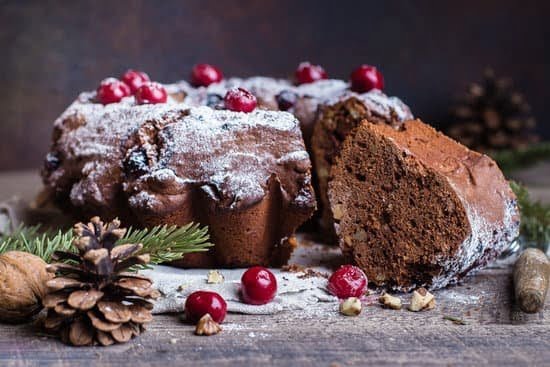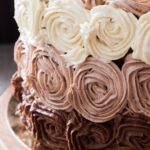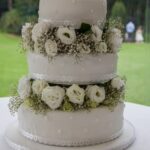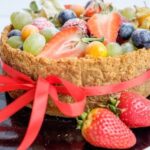Are you ready to take your cake decorating skills to the next level? In this article, you will learn how to make cake decorations with sugar, exploring the artistry and creativity involved in creating visually stunning edible embellishments for your cakes. Whether you’re a beginner or a seasoned baker, mastering the art of sugar cake decorations is an essential skill for creating show-stopping desserts.
The use of sugar for cake decorations provides a versatile and endless array of possibilities for expressing your artistic talents. From simple shapes and designs to intricate 3D figures and ornate patterns, sugar can be molded, shaped, and colored to suit any theme or occasion. The importance of visually appealing cake decorations cannot be understated, as they not only enhance the overall presentation of a cake but also provide a delightful sensory experience for those enjoying the final product.
Before diving into the techniques and creative ideas for using sugar decorations on cakes, it’s essential to understand the different types of sugar that can be used. Whether it’s granulated sugar, powdered sugar, or fondant, each type has its own unique properties and applications in cake decorating.
Additionally, having the right tools is crucial for creating professional-looking sugar cake decorations. With the right piping bags, tips, molds, and shaping tools in hand, you can bring your sugar decorating ideas to life with precision and ease.
Types of Sugar for Cake Decorations
When it comes to cake decorating, the type of sugar used can greatly influence the overall look and taste of the finished product. There are several types of sugar that can be used for creating stunning cake decorations, each with its own unique properties and benefits. Granulated sugar, powdered sugar, and fondant are some of the most common choices for cake decorators.
Granulated sugar is commonly used in basic cake decorations such as sprinkles and simple shapes. It adds texture and crunch to the decorations and is often mixed with food coloring to achieve vibrant colors. On the other hand, powdered sugar, also known as confectioner’s sugar, is perfect for creating delicate and smooth decorations such as icing and intricate designs. Its fine texture allows for detailed work and can easily be molded into various shapes.
Fondant is a popular choice for more elaborate cake decorations due to its pliability and versatility. It can be rolled out thinly to create intricate designs or sculpted into 3D figures with ease. While each type of sugar has its own set of advantages, it’s essential to choose the right one based on the specific decoration being created.
| Type of Sugar | Uses |
|---|---|
| Granulated Sugar | Basic shapes, sprinkles |
| Powdered Sugar | Icing, intricate designs |
| Fondant | Intricate designs, 3D figures |
Essential Tools for Sugar Cake Decorations
When it comes to creating beautiful cake decorations with sugar, having the right tools is essential for achieving professional-looking results. Whether you’re a beginner or an experienced baker, there are several key tools that are necessary for effectively working with sugar in cake decorating.
First and foremost, piping bags and tips are fundamental tools for creating intricate designs and shapes with sugar. Piping bags allow for precise control when dispensing icing or melted sugar onto cakes, while a variety of tips offer different decorative options such as writing, borders, and intricate details. Additionally, molds and shaping tools are vital for crafting 3D sugar decorations like flowers, figures, and other embellishments.
For those looking to venture into more advanced techniques, investing in specialized tools such as sugar sculpting equipment and modeling tools can greatly enhance the intricacy of your sugar decorations. These tools allow for detailed textures, patterns, and 3D effects that can elevate the overall presentation of a cake.
It’s important to note that these essential tools can be found at various baking supply stores or online retailers. When purchasing these items, it’s also beneficial to seek out tutorials or courses on how to use them effectively in cake decorating. With the right tools and some practice, anyone can master the art of creating stunning cake decorations with sugar.
Basic Techniques for Making Sugar Decorations
Creating Simple Shapes
To start making sugar cake decorations, beginners can practice by creating simple shapes such as hearts, stars, and circles. Using powdered sugar or fondant, roll out the material on a clean surface and use cookie cutters to shape the sugar. For more intricate shapes, consider investing in small shaping tools to add details and texture to the decorations.
Making Flowers and Leaves
One popular and visually appealing sugar decoration for cakes is flowers and leaves. To create these delicate decorations, use a piping bag with a small round tip to pipe out petals onto wax paper. Allow the petals to dry before assembling them into a flower using edible glue. Similarly, leaves can be made by cutting out leaf shapes from green-tinted fondant or by piping leaf designs onto a veined mold.
Using Molds for Embellishments
Another technique for making sugar decorations involves using molds for embellishments such as bows, ribbons, or small figurines. Simply press the fondant into the mold and carefully remove the shaped decoration once it has set. This method is perfect for adding intricate details to cake designs without requiring advanced sculpting skills.
By mastering these basic techniques for making sugar cake decorations, bakers can gradually build their skills and confidence in creating visually stunning embellishments for their baked creations. Practicing these fundamental methods will provide a solid foundation for moving on to more advanced sugar decorating techniques.
Advanced Techniques for Making Sugar Decorations
Once you have mastered the basic techniques for making sugar decorations, you may want to explore more advanced methods to create intricate and stunning designs. 3D figures, lace designs, and textured patterns are just a few examples of advanced sugar decorations that can take your cake decorating skills to the next level.
To create 3D figures with sugar, you can use molds or sculpt the figures by hand using fondant or gum paste. These figures can range from simple animals and flowers to more complex characters and objects. Lace designs can be achieved by piping royal icing onto a silicone lace mold or directly onto the cake itself. Textured patterns, on the other hand, can be created using embossing mats or textured rolling pins.
For those looking to improve their sugar decorating skills even further, there are plenty of resources available such as online tutorials, books, and classes. Many professional cake decorators and pastry chefs offer workshops and courses where you can learn advanced sugar decorating techniques in a hands-on setting. Additionally, online forums and social media groups dedicated to cake decorating are great places to connect with fellow enthusiasts and share tips and tricks for creating impressive sugar decorations.
By mastering advanced techniques for making sugar decorations, you’ll be able to elevate your cakes to new heights of creativity and visual appeal. Whether it’s creating intricate figurines or adding delicate lace designs, the possibilities for using sugar in cake decorating are truly endless.
Coloring and Flavoring Sugar for Cake Decorations
When it comes to creating visually stunning and delicious cake decorations, coloring and flavoring sugar play a vital role in the overall appeal of the final product. Whether you are aiming for vibrant hues or unique flavor combinations, mastering the art of coloring and flavoring sugar can take your cake decorating skills to the next level.
In this section, we will explore different methods for coloring and flavoring sugar for cake decorations, as well as the importance of color theory and flavor combinations.
One of the most common ways to color sugar for cake decorations is by using food coloring. Gel food coloring is often preferred over liquid food coloring as it provides more vibrant and concentrated results without adding excess moisture to the sugar. To achieve a uniform color, it is essential to thoroughly mix the food coloring into the sugar using a fork or whisk.
For those looking to add a specific flavor profile to their sugar decorations, consider incorporating flavor extracts or edible dusts into the mixture. This allows you to not only achieve visually striking colors but also infuse your sugar decorations with delightful flavors.
When choosing colors for your sugar decorations, it is important to consider color theory in order to create harmonious and visually appealing designs. Understanding basic color principles such as complementary colors, analogous colors, and monochromatic schemes can help elevate your cake decorating skills.
Similarly, experimenting with complementary flavor combinations can enhance the overall taste experience of your sugared creations. By carefully considering both color and flavor elements in your sugar decorations, you can create visually stunning and delicious masterpieces that will impress any audience.
Incorporating these techniques into your cake decorating repertoire will allow you to unleash your creativity and produce show-stopping confections that are both visually appealing and delectable. Whether you are crafting a whimsical birthday cake or an elegant wedding dessert, mastering the art of coloring and flavoring sugar for cake decorations is an essential skill that every aspiring baker should have in their arsenal.
So next time you embark on a baking adventure, don’t be afraid to experiment with different colors and flavors to elevate your sugary creations.
Troubleshooting Common Issues in Sugar Cake Decorating
When it comes to creating beautiful and intricate sugar decorations for cakes, it’s important to be prepared for any potential challenges that may arise. From consistency issues to breakage and storage concerns, troubleshooting common problems in sugar cake decorating is essential for achieving professional-looking results. In this section, we will address some of the most common issues that decorators may encounter, as well as provide practical solutions and tips for overcoming these challenges.
Consistency Concerns
One of the most common issues in sugar cake decorating is achieving the right consistency when working with sugar. Whether you’re using fondant, royal icing, or gum paste, getting the perfect texture can be a challenge.
If your sugar mixture is too dry and crumbly, try adding a small amount of vegetable shortening or corn syrup to moisten it. On the other hand, if your sugar mixture is too wet and sticky, dust it with powdered sugar or cornstarch to absorb the excess moisture.
Preventing Breakage
Another frequent issue when working with sugar for cake decorations is preventing breakage during the shaping and drying process. To avoid breakage, make sure to handle your sugar decorations gently and allow them sufficient time to dry and set properly before handling or transferring them onto your cake. Additionally, consider using carefully constructed support structures for heavier or more delicate sugar decorations such as 3D figures or lace designs.
Storage Solutions
Proper storage of finished sugar decorations is crucial for maintaining their quality and preventing damage. Store completed decorations in an airtight container at room temperature away from direct sunlight and humidity. For larger pieces that require longer shelf life, consider investing in food-safe desiccants or silica gel packs to absorb any residual moisture and extend the longevity of your sugar creations.
By addressing these common issues in sugar cake decorating proactively, decorators can improve their skills and achieve more professional-looking results with their cake decorations. With a combination of proper technique, patience, and problem-solving skills, anyone can create stunning and visually appealing sugar decorations for their cakes.
Creative Ideas for Using Sugar Decorations on Cakes
In conclusion, learning how to make cake decorations with sugar opens up a world of creative possibilities for enhancing the visual appeal of your baked treats. From basic techniques like creating simple flowers and shapes to more advanced skills like crafting intricate 3D figures and lace designs, mastering the art of sugar cake decorations can take your culinary creations to new heights.
By choosing the right type of sugar, acquiring essential tools, and experimenting with coloring and flavoring, you can personalize your cake decorations to suit any theme or occasion.
Additionally, troubleshooting common issues in sugar cake decorating is an essential part of the learning process. Understanding how to tackle consistency problems, breakage, and storage concerns will help ensure that your sugar decorations look professional and stay intact on your cakes.
It’s also important to think creatively about how to incorporate sugar decorations into your overall cake design. Whether it’s for a special birthday, a wedding celebration, or just a fun themed party, there are endless ways to use sugar decorations to elevate the presentation and appeal of your cakes.
Ultimately, mastering the art of making sugar cake decorations requires practice, patience, and a willingness to explore different techniques and ideas. With dedication and creativity, you can create stunning and delectable works of art that will impress your family, friends, or customers. So embrace the versatility of sugar as a decorative medium for cakes and unleash your imagination as you embark on this delicious journey into the world of sugar cake decorating.
Frequently Asked Questions
How to Make Edible Cake Decorations at Home?
Making edible cake decorations at home can be a fun and creative process. One popular method is to use fondant or gum paste to mold shapes and figures. You can also paint on edible designs using food coloring and brushes, or create 3D elements like flowers or animals.
How to Make Candy Cake Decorations?
Creating candy cake decorations involves melting down your choice of candies, then pouring them into molds to set. You can also use crushed candies to add texture and color to your cake, or even sculpt them into shapes if they’re pliable enough. The possibilities are endless when it comes to using candy as a decorative element on cakes.
How Do You Preserve Sugar Cake Decorations?
Preserving sugar cake decorations is important if you want them to last for a long time. It’s best to keep them in an airtight container away from moisture and sunlight, while also avoiding extreme temperatures which could cause the sugar to melt or become sticky.
If properly stored, sugar decorations can last for months as long as they’re not exposed to adverse conditions.

Welcome to our cake decorating blog! My name is Destiny Flores, and I am the proud owner of a cake decorating business named Cake Karma. Our mission is to provide delicious, beautiful cakes for all occasions. We specialize in creating custom cakes that are tailored specifically to each customer’s individual needs and tastes.





